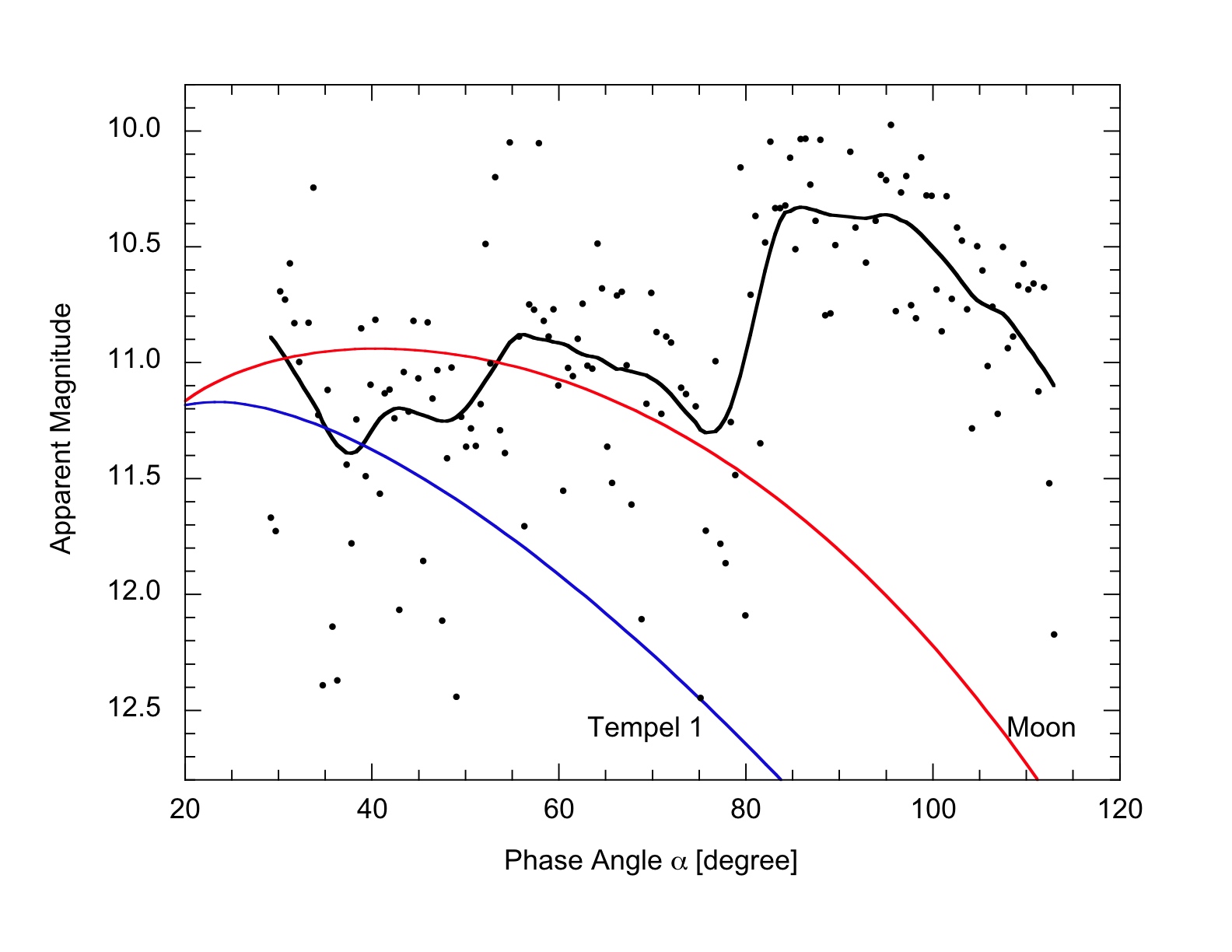Images of asteroid (3200) Phaethon taken near perihelion by the NASA STEREO spacecraft show a sudden brightening that cannot be explained by scattering from an inert solid body. The most likely explanation is that Phaethon ejected dust, perhaps in response to break-down of the surface rocks in the intense (up to 1000 K) heat of the Sun.
The 5km diameter asteroid (3200) Phaethon is widely recognized as the parent of the Geminid meteoroid stream. It has a highly elliptical orbit that brings it to within 0.14 AU (about 15 solar diameters) of the Sun at perihelion. However, it has never shown evidence for on-going mass loss or for any form of comet-like activity that would indicate the continued replenishment of the stream.
We used NASA's STEREO-A spacecraft to image Phaethon near perihelion, in the period UT 2009 June 17 - 22. STEREO offers a detailed, coronagraphic view of the near-sun environment, permitting observations of Phaethon not possible from Earth. The resulting photometry shows an unexpected brightening, inconsistent with scattering from the solid nucleus. We interpret this as an impulsive release of dust particles from Phaethon.
An impact origin of the dust is highly unlikely and Phaethon is too hot for water ice to survive, rendering unlikely the possibility that dust is ejected through gas-drag from sublimated ice. Instead, we suggest that Phaethon is essentially a rock comet, in which the small perihelion distance (and resulting high surface temperature) leads both to the production of dust (through thermal fracture and decomposition-cracking of hydrated minerals) and to its ejection into interplanetary space (through radiation pressure sweeping and other effects).
More observations are needed to determine how frequently Phaethon ejects dust, whether this happens only near perihelion, and how much dust does it lose.

Caption: Apparent brightness of Phaethon plotted as a function of the phase (sun-Phaethon-Earth) angle using data from NASA's STEREO satellite. Red and blue lines show the variation expected if Phaethon were to behave like the Moon or the nucleus of comet P/Tempel 1. Significantly, Phaethon brightens as the phase angle grows, while the Moon and Tempel 1 both fade (essentially because they are moving towards the 'new moon' geometry, where they appear only as thin crescents). The fact that Phaethon is visible at all at phase angles > 80 deg. is because of its unexpected brightening relative to the solid body scattering functions. From our paper.
Caption: Animated movie showing part of the path of Phaethon against the background of fixed stars and the fluctuating solar corona. Click twice on the movie to run it.
The paper, from The Astronomical Journal, is linked here.
David Jewitt
